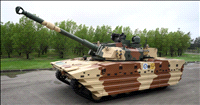Sunlight spawns many binary and 'divorced' binary asteroids
01 Sep 2010
The asteroid belt between Mars and Jupiter is often depicted as a dull zone of dead rocks with an occasional wayward speedster smashing through on its way toward the sun.
A new study appearing in the Aug. 26 issue of the journal Nature paints a different picture, one of slow but steady change, where sunlight gradually drives asteroids to split in two and move far apart to become independent asteroids among the millions orbiting the sun.
Artist's rendering of an asteroid pairArtist's rendering of an asteroid pair during its short-lived proto-binary phase, which might last less than 1 million years. In these unstable proto-binary systems, the primary typically has a diameter of a few kilometers, while the companion is 60 percent or less the size of the primary. Shortly after its formation, the secondary will gently escape, resulting in two asteroids that share the same orbit around the sun. (ESO/L. Calçada)
"This shows that asteroids are not inert, dead bodies of no interest," said study co-author Franck Marchis, a research astronomer at the University of California, Berkeley, and the SETI Institute in Mountain View, Calif. "In fact, small asteroids very slowly evolve into binaries and, eventually, divorced binaries."
Marchis, who studies double- and triple-asteroid systems, teamed up with former UC Berkeley undergraduate Brent Macomber to analyze two pairs of former or "divorced" binaries, which are asteroid pairs that have drifted apart and are no longer gravitationally bound to one another. Macomber, now a graduate student at Texas A&M University, participated through UC Berkeley's Undergraduate Research Apprentice Program (URAP), which matches students with researchers in need of assistance.
Marchis and Macomber contributed their findings to a group of astronomers in the Czech Republic, who analyzed the evolution of 35 pairs of divorced binaries. The leader of that group, Petr Pravec of the Astronomical Institute in the Czech Republic, and 25 colleagues from 15 other institutions published the results this week, showing that all of the asteroid pairs have similar relative masses and relative velocities that point to a similar origin by fission.






















